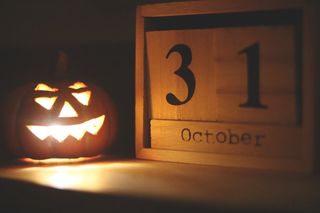Sex
Halloween Sex Offender Laws
Are “No Candy” or “Boo Laws” keeping our kids safe?
Posted October 31, 2019
Halloween is an exciting time for children. However, it is also a time for parents to worry as children are going to strangers’ houses in the dark, and especially when, in the case of older children, they are going without parental supervision. Parents are especially concerned about the dangers posed by sex offenders on Halloween. As a consequence, many states have passed “No Candy” and Boo Laws” which impose restrictions on those convicted of sex crimes specifically on Halloween.

Legislation direction at released sex offenders is not new. In 2006, the Sex Offender and Notification Act (SORNA) was signed into law as part of the Adam Walsh Child Protection Act. Under SORNA, all states are required to maintain sex offender registries which provide the picture, home address, work address, and crime description for those convicted of sex crimes. Upon release from prison, those convicted of sex crimes must register from between 15 years to life. These publicly available sex offender registries started in New Jersey after 7-year-old Megan Kanka was sexually assaulted and murdered by her neighbor—a twice-convicted sex offender who unbeknownst to her parents was living down the street from them. Thus, one reason for these laws is to let parents know who in their neighborhood may pose an increased risk to their children.
Given that Halloween may be a particularly risky night as those convicted of crimes can have easy access to minors, many states have imposed “No Candy” laws which prohibit those on the sex offender registry from distributing candy to children. Further, they are required to post signs outside their residence reading “No Candy at this Residence”. Other states prevent those on the registry from wearing Halloween costumes, going to Haunted House or Corn Maze attractions, or being out on the street during peak trick-or-treat hours. California has “Operation Boo” which allows law enforcement officials to make sure that registered sex offenders are inside their residence with the lights out on Halloween. New York State has a similar law— “Halloween: Zero Tolerance” —where law enforcement officials can conduct unannounced home visits, curfew checks and phone calls to make sure that registered sex offenders are at home on Halloween without contact with children. Those found violating these regulations can be charged with a felony and receive up to 3 years in prison.
So, are these laws keeping our kids safer on Halloween? In short – no. There is no evidence that sex crimes occur at higher rates on Halloween than any other day of the year. Specifically, researchers examined over 67,000 cases of child sexual abuse and found no increased risk on Halloween or the two days preceding it. These findings held true both before and after the implementation of Halloween restrictions on sex offenders.
It could be argued that Halloween restrictions are harmless enough and if they can prevent even one case of sexual offending, they are worthwhile. However, the researchers reason that these Halloween laws which are based upon myth and not evidence, take valuable law enforcement resources which are very much needed to ensure traffic and pedestrian safety on Halloween. What research does show is that cars do pose a significant danger to children on Halloween and children are four times more likely to be killed by a car on Halloween than any other day of the year. Thus, while Halloween laws may make parents feel better, there is no evidence that they are keeping our children safer on Halloween.
References
For more information, see: Jeglic, E.J., & Calkins, C.A. (2018). Protecting you Child from Sexual Abuse: What you Need to Know to Keep your Kids Safe. New York: Skyhorse Publishing.
Chaffin, M., Levenson, J., Letourneau, E., & Stern, P. (2009). How safe are Trick-or-Treaters? An analysis of child sex crime rates on Halloween. Sexual Abuse, 21(3), 363-374.


